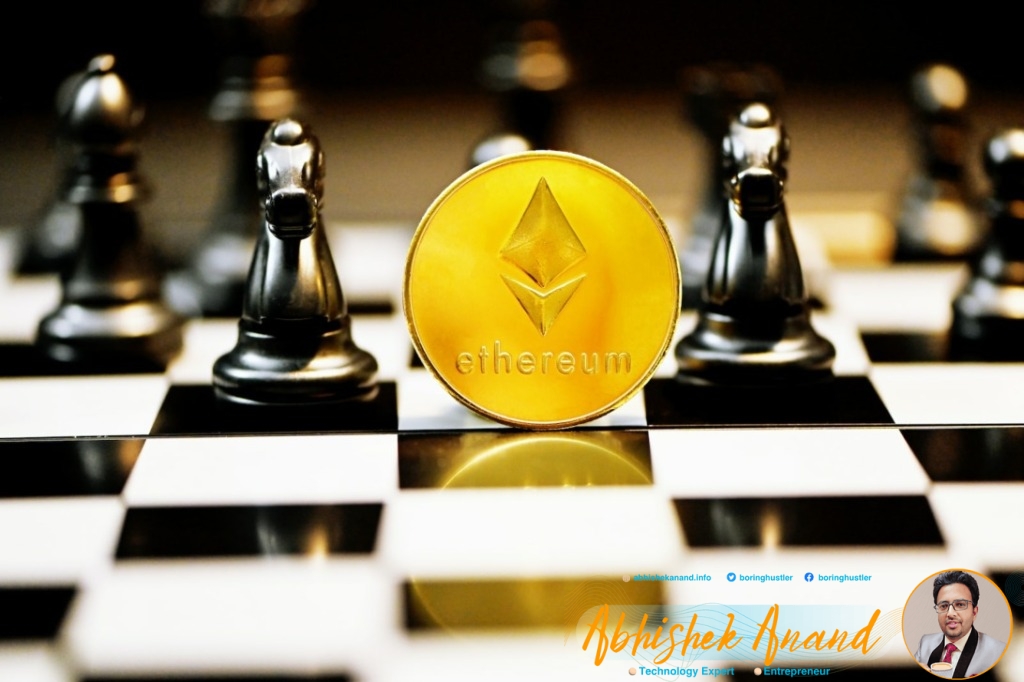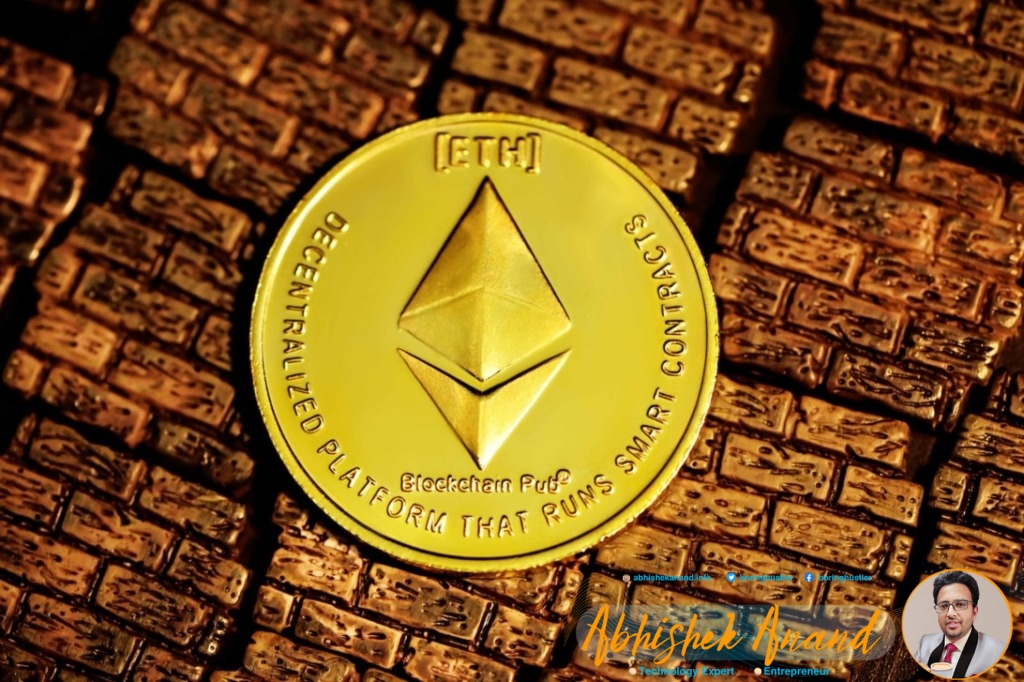Introduction
The Ethereum Virtual Machine (EVM) is a Turing-complete virtual machine that allows for the execution of smart contracts on the Ethereum blockchain. The EVM is responsible for processing and executing transactions on the Ethereum network.
The EVM was designed to be run on a variety of platforms, including but not limited to, personal computers, mobile devices, and servers. The EVM is also responsible for managing the execution of smart contracts on the Ethereum blockchain.
How does EVM work?
The EVM is a virtual machine that runs on a distributed ledger, called the blockchain. The EVM executes transactions in a secure and tamper-proof manner. Transactions on the Ethereum blockchain are processed and executed by the EVM.
The EVM has a built-in programming language, called Solidity, which allows developers to write smart contracts. Smart contracts are programs that run on the EVM and can be used to facilitate, verify, or enforce the negotiation or performance of a contract.
What are the benefits of EVM?
The EVM provides many benefits, including but not limited to:
- Security: The EVM is a secure and tamper-proof platform that runs on a decentralized network of computers. This ensures that transaction data is safe from hacking and tampering.
- Reliability: The distributed nature of the EVM means that it is highly resistant to downtime and network outages.
- Flexibility: The EVM can be used to develop a wide range of applications, from simple apps to complex decentralized applications (Dapps).
- Scalability: The EVM can handle a large number of transactions per second due to its sharding technology. This makes it suitable for high-traffic applications.
What are the challenges of EVM?
Despite its many benefits, the EVM faces some challenges, including but not limited to:
- Complexity: The EVM is a complex platform that requires a certain level of technical expertise to understand and use effectively.
- Limited language support: Currently, Solidity is the only language that can be used to write smart contracts on the EVM. This limits the number of developers who can create contracts on the platform.
- Lack of standardization: There is no standardization among different implementations of the EVM, which can lead to compatibility issues.
- Resource intensive: The resource requirements of running an Ethereum node can be prohibitive for some users.

What is Ethereum Virtual Machine (EVM)?
Ethereum Virtual Machine (EVM) is a decentralized platform that runs smart contracts. It is a Turing-complete virtual machine that allows developers to build and run decentralized applications (DApps) on the Ethereum blockchain.
The EVM executes a piece of code called a smart contract. A smart contract is a program that runs on the Ethereum network and can be used to securely store, send, and receive data or value. Smart contracts are stored on the Ethereum blockchain and can be executed by anyone with an Ethereum address.
The EVM is designed to be secure, scalable, and efficient. It is powered by the Ethereum blockchain, which is secured by Ethereum’s consensus algorithm, Proof of Work (PoW). The EVM is also designed to be backward-compatible, meaning that it can run existing Bitcoin and Ethereum software.
The EVM has been used to power some of the most popular DApps, including Augur, MakerDAO, and Melonport. The EVM is also used by Ethereum’s developer platform, Truffle Suite.
The EVM is open-source software that is available to anyone who wants to use it. The EVM is constantly being improved by the Ethereum community.
What is Turing’s completeness?
One of the most important features of Ethereum Virtual Machine (EVM) is that it is Turing complete. This means that it can run any computation that a Turing machine can, making it incredibly powerful. With EVM, there is no need for a central server or cloud service to run your applications. All you need is the Ethereum blockchain and a node client.
Turing completeness is a measure of the power of a given computational system. A system is Turing complete if it can perform any computation that can be done by a Turing machine. The Turing machine is an abstract model of a computer that was first proposed by Alan Turing in 1936. It consists of an infinitely long tape divided into squares, each of which can contain a symbol from a finite alphabet. The machine can read and write symbols on the tape, as well as move the tape back and forth.
For a system to be Turing complete, it must be able to perform any computation that can be done by a Turing machine. This means that the system must be able to read and write symbols on an infinite tape, as well as move the tape back and forth. In addition, the system must be able to do this in a finite amount of time.
Is EVM a state machine?
EVM is a state machine, meaning that it can only be in one of a finite number of states at any given time.
This is different from a Turing machine (in fact a subset of it), which can be in an infinite number of states. The finite number of states in EVM makes it easier to reason about and verify programs.
What are Dapps?
Dapps are decentralized applications that run on a blockchain. They are often open-source and promise to keep users’ data safe from third-party interference. Many dapps are still in development, but there are already a few popular ones available, including Augur, Etheroll, and Gnosis.
What is EVM Compatibility
To put it simply, EVM compatibility means that a blockchain can run smart contracts written in Ethereum’s programming language, Solidity. This is important because it allows developers to create dapps that can be used on multiple blockchains.
Currently, there are two main types of blockchains: those that are compatible with EVM (Ethereum Virtual Machine), and those that are not. Blockchains that are not compatible with EVM are said to be “non-EVM blockchains”. The most popular non-EVM blockchain is Bitcoin.
There are a few different ways to add EVM compatibility to a blockchain. One way is to create a sidechain that is compatible with EVM. Another way is to use a “wrapper” which allows existing blockchains to be used with EVM smart contracts.
The most common way to add EVM compatibility to a blockchain is by forks. Forks occur when the code of a blockchain is duplicated and then modified. The modification can be anything from adding new features to changing the consensus algorithm.
Ethereum forks are a bit different from other types of forks because they don’t just modify the code, they also create a new blockchain that is compatible with EVM. The most famous Ethereum fork is Ethereum Classic (ETC). Ethereum Classic is a fork of Ethereum (ETH) that occurred in 2016 after the DAO hack.
Currently, the most popular way to add EVM compatibility to a blockchain is by using forks. However, this method has some drawbacks. For one, it can be difficult to keep track of all the different forks. Additionally, forks can cause community splits and lead to confusion for users.
Wrappers and sidechains offer an alternative to forks for adding EVM compatibility to a blockchain. Wrappers allow existing blockchains to be used with EVM smart contracts while sidechains provide a separate blockchain that is compatible with EVM. However, these methods are not as widely used as forks and have their own challenges.

Is EVM decentralized?
Ethereum Virtual Machine (EVM) is a decentralized platform that runs smart contracts. It is the runtime environment for smart contracts in Ethereum.
EVM is decentralized because it is not controlled by any single entity. Instead, it is run by nodes on the Ethereum network. These nodes work together to validate and execute transactions on the network.
The EVM is important because it allows developers to create decentralized applications (dApps) that run on the Ethereum network. dApps are applications that are not controlled by any single entity, and they can be used for a variety of purposes.
Some examples of dApps include:
decentralized exchanges (DEXes), which allow users to trade cryptocurrencies without the need for a central exchange,
decentralized lending platforms, which allow users to borrow and lend cryptocurrencies without the need for a central platform,
decentralized storage platforms, which allow users to store data securely without the need for a central storage provider.
The EVM is also important because it makes Ethereum more secure. Smart contracts that run on the EVM are stored on the blockchain, and they cannot be altered or deleted. This makes it impossible for anyone to tamper with them.
In addition, the EVM is capable of running programs called Solidity. Solidity is a programming language that was specifically designed for writing smart contracts. It is one of the most popular languages for developing dApps.
Finally, the EVM is important because it allows Ethereum to scale. The Ethereum network can process a large number of transactions per second thanks to the parallel processing capabilities of the EVM. This makes it possible for dApps on Ethereum to handle a large number of users without slowing down or becoming overloaded.
What is the Purpose of the Ethereum Virtual Machine?
The Ethereum Virtual Machine (EVM) is a decentralized platform that runs smart contracts. It is an environment that allows developers to test and deploy their applications without having to worry about the underlying infrastructure. The EVM is also responsible for executing transactions on the Ethereum blockchain.
The purpose of the EVM is to provide a secure and reliable environment for executing smart contracts. Smart contracts are programs that run on the Ethereum blockchain and are used to facilitate transactions and other interactions between users on the network. The EVM ensures that all transactions are processed fairly and transparently.
In addition to executing transactions, the EVM can also be used to run other types of applications. These include decentralized applications (dapps) and decentralized autonomous organizations (DAOs). Dapps are usually built on top of the Ethereum network and allow users to interact with each other in a variety of ways. DAOs, on the other hand, are organizations that exist on the blockchain and are governed by smart contracts.
The EVM is crucial to the functioning of the Ethereum network. It allows developers to build and deploy decentralized applications and organizations without having to worry about the underlying infrastructure. The EVM also ensures that all transactions on the network are processed fairly and transparently.
Let’s understand Smart Contracts
Smart contracts are self-executing contracts with the terms of the agreement between buyer and seller being directly written into lines of code. This code is stored, replicated, and distributed across a network of computers running the Ethereum blockchain.
The result is a more secure, efficient, and transparent way of executing transactions and agreements.
Ethereum Virtual Machine (EVM) is the runtime environment for smart contracts in Ethereum. It is a 256-bit register stack, designed to run the same code exactly as intended. EVM makes it possible to execute smart contracts on Ethereum without having to trust the underlying network.
To understand how EVM works, let’s take a look at an example. Suppose you want to buy a product from an online store. Normally, you would have to trust that the store will send you the product after you have paid for it.
With a smart contract, you can buy the product and pay for it with Ether (ETH). The contract will then hold onto the ETH until it verifies that you have received the product. Once the contract is satisfied that you have received the product, it will release the ETH to the store. If you do not receive the product, the ETH will be refunded to you.
EVM makes it possible to create all sorts of smart contracts, from simple ones like our example above to more complex contracts that can be used to create decentralized applications (DApps).
If you’re interested in learning more about Ethereum Virtual Machine or DApps, we have a course that covers everything you need to know!

How does EVM work?
Ethereum Virtual Machine (EVM) is a Turing-complete virtual machine that allows developers to create smart contracts and decentralized applications. The EVM executes instructions written in bytecode, which is a series of instructions that can be executed by the EVM. The bytecode for a contract is stored on the Ethereum blockchain.
Each contract has an associated account, which stores the contract’s code and data. When a contract is created, its code is stored in the account’s code storage. The data storage is used to store data associated with the contract, such as the result of computations.
The EVM executes instructions in a sandbox environment, which is isolated from the rest of the Ethereum network. This ensures that contracts can not interfere with each other or with the Ethereum network itself.
To execute a contract, someone must send a transaction to the contract’s address. The transaction includes data that is used by the contract to perform its computations. The transaction also includes gas, which is used to pay for the computation time required by the contract.
Once a transaction is received by a contract, it is added to a pool of transactions waiting to be processed. The transactions in the pool are ordered by their gas price, with the highest gas prices being processed first.
Transactions are processed in batches, known as blocks. Each block can only process a limited amount of gas, so if there are more transactions in the pool than can be processed in a single block, those transactions with lower gas prices will be left in the pool until they can be processed in a future block.
The results of computations performed by contracts are stored on the Ethereum blockchain. This ensures that all computations are transparent and tamper-proof.
What functionality EVM provides
The Ethereum Virtual Machine (EVM) is a decentralized platform that runs smart contracts: applications that run exactly as programmed without any possibility of fraud or third-party interference.
EVM is run by nodes all around the world that come to a consensus about the current state of the network. This consensus allows for the trustless execution of smart contracts, meaning that users can be confident that a contract will execute as intended and that no one will be able to interfere with it.
The functionality provided by EVM is vast and can be used to create many different kinds of applications. Some of the most popular applications built on Ethereum are decentralized exchanges, games, and social networks.
Decentralized exchanges are online platforms that allow users to trade cryptocurrency without the need for a central intermediary. These exchanges are powered by smart contracts that execute trades automatically and securely.
Games built on Ethereum are another popular use case for the platform. These games can range from simple collectible games to full-fledged online casinos. The use of smart contracts in these games allows for a level of fairness and transparency that is not possible with traditional online gaming platforms.
Finally, social networks built on Ethereum are a newer use case but one that is gaining traction. These networks allow users to interact with each other and create content without the need for a centralized platform. This gives users more control over their data and privacy while also opening up new monetization opportunities.
Relationship between Gas and the performance of EVM?
The Ethereum Virtual Machine (EVM) is the decentralized platform that runs smart contracts on the Ethereum network. The EVM is a playground for developers to create and test new applications without having to worry about third-party interference.
The EVM executes transactions and runs smart contracts written in Ethereum’s programming language, Solidity. To run a transaction or contract on the EVM, you need to pay a fee called gas. The amount of gas you need to pay depends on the complexity of the transaction or contract.
The more complex the transaction or contract, the more gas it will consume. The amount of gas you need to pay also affects the performance of your transaction or contract. If you don’t have enough gas to pay for a complex transaction or contract, your transaction will be rejected by the network.
You can think of gas as the fuel that powers the EVM. It’s important to remember that gas is not a currency; it’s a unit of measurement. When you pay for gas, you’re actually paying for the computational power needed to execute your transaction or contract.

How is Data Stored in Ethereum?
Ethereum uses a decentralized database called a blockchain to store data. This blockchain is made up of a series of blocks, which are like records in a database. Each block contains data about transactions that have taken place on the Ethereum network, and each block is connected to the one before it chronologically. This means that it’s very difficult to change or delete data that has been stored in a block—once data is put into a block, it’s there forever.
The data that’s stored in each block includes information about the sender and receiver of the transaction, as well as the amount of ETH that was sent. This data is encrypted so that only those with the correct key can access it. The key is generated by the sender’s computer and is known only to them.
Whenever a transaction takes place on the Ethereum network, all of the nodes in the network—meaning, all of the computers that are running the Ethereum software—verify that the transaction is valid. Once the transaction is verified, it is then stored in a block. This process is known as mining. Miners are rewarded with ETH for their efforts in verifying and storing transactions on the network.
Data on the Ethereum blockchain is immutable, meaning it cannot be changed or deleted. This makes Ethereum an incredibly secure platform, as hacked or maliciously altered data would be immediately detectable by all of the nodes in the network.
Permanent Data
Data stored on the Ethereum blockchain is permanent. This means that once something is written on a blockchain, it cannot be altered or deleted. The data stored on Ethereum is transparent and publicly accessible. Anyone can view the history of all transactions that have taken place on the Ethereum blockchain.
The permanence of data on Ethereum is made possible by the way that the network is designed. Ethereum uses what is known as a proof of work system. This system requires each transaction to be verified by a network of computers, known as miners. Miners are rewarded with Ether, the native currency of Ethereum, for their efforts.
The proof of work system makes it very difficult to alter or delete data that has been written to the blockchain. To do so, a hacker would need to control more than half of the Ethereum network. This is known as a 51% attack and is considered highly unlikely.
Ephemeral Data
In computer science, ephemeral data is data that is not permanently stored. It exists for a short period and then is deleted. Ethereum Virtual Machine (EVM) is a type of ephemeral data. It is created when a transaction is processed on the Ethereum network.
EVM is used to execute smart contracts and track their progress. When a contract is processed, the EVM creates a log of the contract’s execution. This log is called an ephemeral receipt. The receipt contains information about the steps that were taken during the execution of the contract. After the contract is executed, the EVM deletes the receipt.
An example of ephemeral data would be the balance of an account address. When transactions are transmitted by or received at an account address, the amount that is held there is recorded in the state trie and is changed.
In this way, ephemeral data like account balances and permanent data like mined transactions are maintained separately.
Ethereum accounting is quite similar to bank accounting. Using a debit card could serve as an example. Banks keep track of how much money is on each debit card, and when customers need to make a purchase, the bank examines its records to verify sure the account has the required balance before authorizing the transaction.

What are the benefits of EVM?
The Ethereum Virtual Machine (EVM) is a key component of the Ethereum blockchain platform. It is a Turing-complete virtual machine that runs Ethereum smart contracts. The EVM executes transactions and stores contracts on the Ethereum blockchain.
The EVM is important for several reasons. First, it allows for the execution of complex smart contracts on the Ethereum blockchain. Second, it enables developers to create decentralized applications (DApps) that run on the Ethereum network. Finally, the EVM makes it possible to run multiple virtual machines on the same computer, which makes Ethereum more scalable than other blockchain platforms.
There are several benefits of EVM. First, it is more secure than traditional virtual machines because it is immune to hacks that exploit vulnerabilities in traditional systems. Second, the EVM is more efficient than traditional virtual machines because it can run multiple virtual machines on the same computer. Finally, the EVM makes it possible to run DApps on the Ethereum network without having to trust a central authority.
What are the challenges of EVM?
The Ethereum Virtual Machine (EVM) is a decentralized platform that allows for the execution of smart contracts. However, several challenges need to be addressed for EVM to be truly successful.
One of the main challenges is scalability. The EVM can currently only handle a limited number of transactions per second, which is a limiting factor for its adoption by businesses and organizations.
Another challenge is security. The EVM is susceptible to hacking and other security vulnerabilities. This has led to the loss of millions of dollars worth of Ethereum (ETH) and other cryptocurrencies.
Lastly, the EVM is still in its early stages of development and needs to overcome these challenges before it can be widely adopted.

Conclusion
Ethereum Virtual Machine is a decentralized platform that runs smart contracts: applications that run exactly as programmed without any possibility of fraud or third-party interference.
EVM is a key component of Ethereum, a decentralized platform that runs smart contracts. EVM allows developers to create applications that run exactly as programmed without any possibility of fraud or third-party interference.
The benefits of EVM include increased security, transparency, and efficiency. However, the challenges of EVM include its complexity and the need for specialized hardware.
The purpose of the Ethereum Virtual Machine is to provide a secure and efficient environment for running smart contracts. EVM is a key component of Ethereum and allows developers to create decentralized applications.

